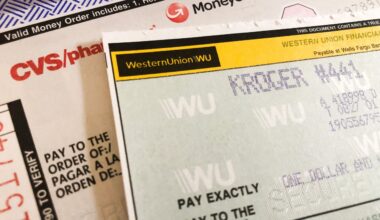Pricing the goods and services can be difficult. If you set the prices too high, you will lose important profits. If you set them too low, you will lose out on important sales.
Pricing, thankfully, does not have to be a sacrifice or a wild guess. There are different examples of pricing models and strategies. They will assist you in better understanding how to set the best prices for your audience and sales targets. That is why we have put together this guide.
If you’re a newcomer to business or a seasoned pricing expert, the techniques and strategies in this guide will help you get comfortable pricing your items. Save this guide for later.
What is Pricing Strategies?
Pricing strategies are models or processes for determining the most competitive price for a good or service. It assists you in determining prices that optimize income and shareholder value while taking customer and business demand into account.
If only pricing were as straightforward as its concept — there’s a lot that goes into it.
Many aspects of your industry, such as sales targets, marketing objectives, target audience, brand positioning, and product attributes, are factored into pricing strategies. External factors such as customer demand, competitor pricing, and general business and economic patterns all have an effect on them.
Pricing is something that many entrepreneurs and business owners overlook. They also examine the cost of goods sold (COGS). They compare it to the prices of their competitors and adjust their own selling price by a few dollars. Although your costs of goods sold and competitors are significant, they should not be the focus of your pricing strategy. Your profit and sales would be maximized if you use the right pricing strategy.
How To Choose Pricing Strategies
Pricing is never about you nor is it about your products or services. Failure to understand this simply means you may end up with overpricing or underpricing. Basically, both have a direct negative influence on sales. Therefore, keep an eye on your competitors, your target audience as well as your target market buying power since they determine what happened with your set pricing.
Things To Consider Before Choosing Pricing Strategies
Before settling on the strategies to use in your pricing strategies, ensure you put the following into due considerations
#1. Value Proposition
What is your products value proposition? You have to first identify and project the astounding benefits your product offers to your target market. Generally, it is advisable to set price in line with the value of products. That way, people get to see the exact distinction between your products and possible substitute.
#2. Identify Your Target Audience
Basically, there are four segment in identifying your target audience. The entire audince in the market, the set with desire for product with no buying power , the set with the buying power with no desirefor product and the set with desire and buying power for your products. When choosing a pricing strategy, make sure you bear in mind the buyers persona’s buying power.
#3. AnayzeTotal Cost Of Production
This is crucial and must be critically analyzed before choosing a pricing strategy. The cost includes every expenses incurred in the production of your products or service. You also need to estimate the cost of moving the goods as it includes cost incurred between the point of production to supply.
Advantages Of A Pricing Strategy
The ability to compare prices is the second most significant advantage of shopping online for customers. When e-commerce expands, price comparison becomes easier by the day. This implies that customers will continually pursue the best deal they can find.
Having a solid pricing plan in place will help you fulfil consumer needs by providing justification for your higher or lower prices. Your plan will provide a repeatable mechanism that will allow you to consider how your target audience. Perhaps even your competitors—will respond to your pricing decisions. When your strategies improve, you’ll be able to convert even the most price-sensitive customers.
When combined with an effective marketing plan, pricing strategies can even help you change the perceived value of your goods or services in the long run.
Best Pricing Strategies Examples
You will start brainstorming how you can leverage price to boost your market share by learning about the pricing tactics that other business owners are using today. We’ll go through seven examples of pricing strategies you can use to catch and turn more leads in the section below.
Bear in mind when you read through these examples that you are never limited to a single pricing strategy in the long run. Many business owners can change their strategies or combine various approaches over time. Occasionally, one product or service will necessitate a different pricing approach than another. All it takes is a little trial and error with the following strategies to figure out what works best for your business.
#1. Price Skimming Strategy
A price skimming strategy involves selling a new product or service at a high price point and then gradually dropping the prices over time. This is an excellent way to attract customers, especially high-income customers who consider themselves early adopters or trendsetters.
From the viewpoint of a company owner, price skimming can be highly beneficial in assisting you to break even faster. This approach offers adequate security—as long as the initial price isn’t too high—before making your product or service more available to the larger market. As long as you maintain your online reputation management throughout the initial release phase, the larger market will be looking for lower prices.
Price skimming can be especially beneficial for business-to-consumer (B2C) brands that depend on rapidly changing trends. Consider how fashion stores almost always launch product lines at a higher price. They later reduce them as soon as newer, trendier clothes arrive. Electronics retailers also use price skimming as well. They begin with premium pricing when phones or laptops with new features are released.
#2. Pricing for penetration
Price skimming is the polar opposite of a penetration pricing technique. Instead of beginning with high prices, you start with low prices and gradually raise them as the business grows. Although this puts you at risk of making little to no money at first, depending on how low you go, it easily converts. You are offering a discounted product to generate consumer loyalty in the same way that a free demo will inspire a customer to make a purchase.
Penetration pricing is intended to draw attention to your brand. As a result, your prices will still begin lower than those of your rivals. If you’ve gained market penetration, you can raise your price to an equal or even higher level. This is based on how good your customer feedback is.
#3. Competitive Pricing
Competitive pricing is somewhat similar to penetration pricing in that the aim is to divert your target audience’s attention away from your rivals and toward your brand. Instead of raising your prices later, you will continue to monitor what your rivals are charging to beat them out. Many retailers, such as Walmart and Dick’s Sporting Goods, would also match prices to ensure they never miss a beat.
This approach can be difficult to maintain. This is why many business owners prefer a penetration pricing strategy, aggressive pricing can be useful if lowering production costs is one of the strengths. It will keep price-sensitive consumers loyal to your brand by consistently assisting them in staying within budget.
Economy pricing is closely similar to competitive pricing in that it depends on low manufacturing costs to maintain stable low prices regardless of what rivals charge.
Low prices aren’t always the most appealing choice. When your target audience values quality over price, you must illustrate the benefits that your brand can offer. A premium pricing strategy will help you increase the perceived value of your product or service right from the start. Your prices fall marginally over time, but they should still convey a sense of exclusivity and, in many cases, luxury to your customers.
Nonetheless, although the concept of high prices is mostly associated with luxury brands such as Fendi and Mercedes-Benz, any brand may adopt this strategy. Advil, for example, still charges a premium for its drugs, even though generic pain relievers are similarly successful. As a result, many customers opt for Advil. They might even believe it works better—when they are simply paying more for a reputable brand name.
#5. Loss leader pricing
Many retailers, both online and offline, entice consumers by selling a single heavily discounted product or product line while enticing them to buy more. As a result, the company’s profit per transaction increases.
Though this pricing technique is often associated with promotional pricing, which is used for short-term sales, it can also be used for long-term sales. Long-term loss leader pricing is often seen in the context of package pricing. It offers greater discounts as customers purchase more.
While offering discounts for bundling would not necessarily raise your profit margin, the theory is that you will get more regular sales. This would ultimately exceed what you would have sold if you only priced products individually.
#6. Psychological pricing
The figures you see will have a greater impact on you than you realize. Psychological pricing, as opposed to manipulating consumer expectations of a commodity, seeks to adjust perceptions of what the price is in the first place. Here are a few popular examples of this technique that have been shown to work:
- Ending a price with an odd number to give the impression that the consumer is paying much less ($5.99 instead of $6, or 97 cents instead of $1). This is often referred to as charm pricing.
- For dollar amounts, use larger font sizes, and for cents, use smaller font sizes. When combined with charm pricing, you can reinforce a customer’s perception that they are paying significantly less.
- Putting the initial price next to the selling price to show buyers how much money they’re saving. This is sometimes referred to as anchor pricing.
A psychological pricing strategy is ideally suited for brands aiming at price-sensitive consumers. It offers a perceived bargain that customers with a penchant for luxury may not want.
#7. Value-based Pricing
Probably the most effective pricing technique is value pricing. This considers how valuable, high-quality, and essential your customers consider your goods or services to be. Value pricing is what makes a wedding gown worth thousands more than a prom gown and why high-end salon haircuts are more expensive than Great Clips services.
To set value-based prices, you must first consider your target audience’s desires, pain points, and motives, as well as the prestige of your brand. You must also consider how the state of the economy influences how people interpret the value. During a recession, the value of a non-necessity, such as a Netflix subscription, could fall.
Although we emphasize value pricing as a separate approach, we still suggest considering value, even if it isn’t your primary tool. This will help you reduce risk by ensuring that you don’t start with an overpriced price while price skimming or underselling yourself with competitive pricing.
How Do I Create A Winning Pricing Strategies
#1. Understand Your Value Metrics
#2. Know and Understand Your Target market
#3. Run a market research
What is discriminatory pricing?
Discriminatory pricing is a pricing strategy where different prices are charged for the same product or service based on factors such as the customer’s age, gender, location, or other demographic characteristics.
What is the importance of regularly reviewing and adjusting pricing strategies?
Since market conditions, competitors, and other factors can all affect the viability and effectiveness of pricing strategies, it’s important to review and adjust them on a regular basis.
How do I determine the right price for my product or service?
The right price for a product or service is the one that covers costs, generates a profit, and meets the expectations and purchasing power of the target market. This can be determined through market research, competitor analysis, cost analysis, and customer feedback.
What is the importance of regularly reviewing and adjusting pricing strategies?
Regularly reviewing and adjusting pricing strategies is important because market conditions, competitors, and other factors can change, affecting the viability and effectiveness of existing pricing strategies. This can help businesses stay competitive and maintain profitability.
Conclusion
When you use a pricing strategy that is unique to your business, you can be confident that you are setting prices that your customers want to see. Using a logical approach to pricing a product or service would help you increase your profits and sales volume.
When determining the prices that consumers are willing to pay for your brand, keep in mind that attitudes will shift over time.
Pricing Strategies FAQs
What is your pricing strategy and why?
Generally, pricing strategies include the following five strategies. Cost-plus pricing—simply calculating your costs and adding a mark-up. Competitive pricing—setting a price based on what the competition charges. Value-based pricing—setting a price based on how much the customer believes what you’re selling is worth.
How do you choose a pricing strategy?
Get It Right: Pricing Strategies That Work
- Understand Your Customers’ Unmet Needs and the Value You Offer. …
- Evaluate Your Competitive Strengths and Weaknesses. …
- Choose Your Strategy, Then Link Your Advantage With Customer Needs. …
- Evaluate Your Costs, and Keep Your Break-Even Low.
What is the meaning of pricing strategy?
Pricing Strategy is a tool used to fix the price of a particular product or service by considering various factors like the consumption of resources, Market conditions, the ability of customers, demand and supply, need of the product like regular item or occasional, etc.
Why is pricing strategy important?
Price points are prices that appear to support a certain level of demand. For example, jeans priced at $100 may sell 40,000 units but jeans priced any higher may sell less than 10,000 units.






